Dogs with heat pad therapy can have less pain, less stiffness, and more relaxed muscles.
Can your dog’s arthritic pain be relieved by heat therapy? Indeed. In addition to providing your dog with certain benefits, an orthopedic dog heating pad can also be comforting on a chilly day.
Your dog with arthritis may find that heat helps both relieve and heal chronic pain over time. Not only can heat relieve your dog’s sore joints, but it also promotes blood circulation. Warmth frequently relieves muscle spasms and causes stiff joints to relax. Using heat on your dog can help him benefit as much as possible from stretching exercises or rehabilitation.
Heat treatment lowers muscular spasm, improves local tissue oxygenation and metabolism, and raises the pain threshold and extensibility of connective tissue.

Cold therapy works best to reduce inflammation after an acute injury. Consider using cold compresses for the first 24 hours if your senior Labrador aggravates a previous stifle injury, for instance. After surgery, cold therapy is the most beneficial alternative for up to 72 hours.
When using heat or leaving your dog on a heating pad, exercise caution. It’s possible to unintentionally warm the region and exacerbate the trauma. Pet-specific heating pads come with heat settings that are ideal for a dog’s requirements. It is possible to set a human heating pad too high, and overheating is particularly dangerous for elderly, injured, or young dogs.
Always make sure your dog is comfortable by checking on them often. Placing a covering, such as a towel, between your dog and the heating pad is usually the best option. Applying heat to your dog for longer than 30 minutes is generally not recommended, while your dog might benefit from as little as 10 minutes.
You may create a low-cost heating “pad” at home by heating a moist towel in the microwave. Keep in mind that your dog will find it too hot when you remove it if it is hot to the touch. You can apply the warm, damp cloth straight to a sore joint. The same goes for rice or maize kernels; keep them away from the dog, as well as hot water bottles. For your dog’s arthritis pain, warm therapy works great—but it’s important to use warm, not hot, therapy.
If you are interested in more information about our Posh Dog Knee Brace or treatment for your dogs leg injuries please contact us via our contact form or visit our Facebook Page.
There are too many variables to make a general recommendation. When creating the ideal walking plan for your dog, take them all into account.
There isn’t a reliable general guideline that specifies how far or how long you should walk your dog. The frequency of dog walks should be determined by several pertinent aspects that are unique to each person’s health and requirements. These factors include:
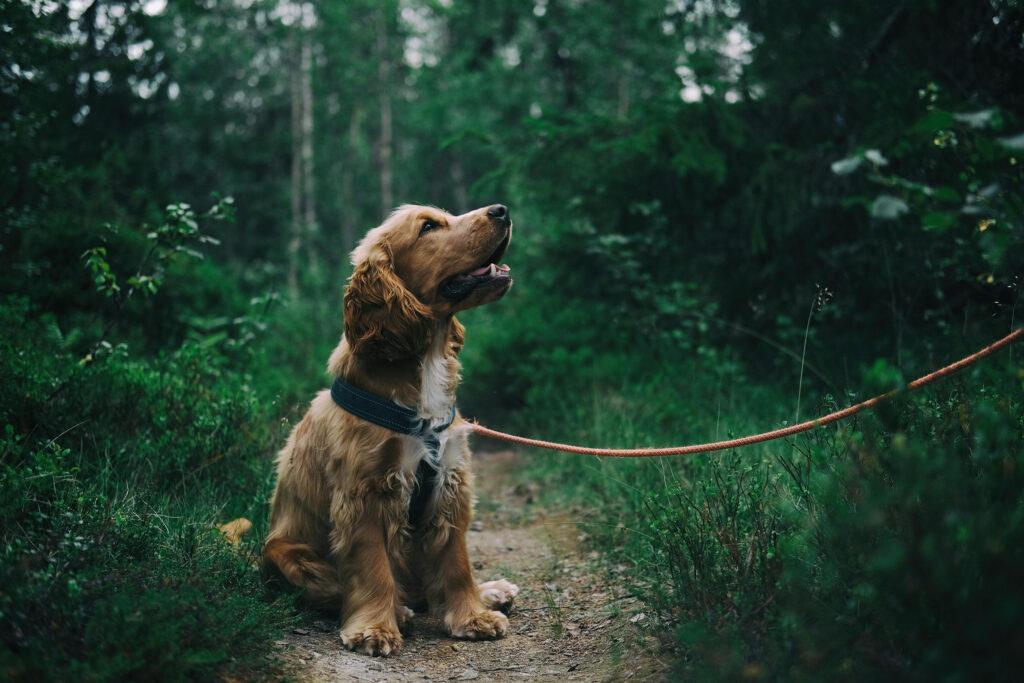
A few warnings: Longer and quicker walks may not be in your dog’s best interest if she is an exercise addict who is constantly pushing herself to go farther and faster. This could cause her to get overly excited about starting a half-marathon or footrace every time you put on her leash. Alternate her long walks with shorter ones to help her learn how to take a more balanced approach to walking while also encouraging her to sniff and look around.
On the other hand, you are probably overdoing it if your dog occasionally refuses to go on walks, lays down, or runs for home. She may be in some bodily discomfort that you are unable to identify, in which case you should speak with your veterinarian. There’s never a good reason to make your dog participate in something she doesn’t appreciate.
Beyond the ones we’ve already discussed, there might be other medical issues. When it comes to physical concerns about your dog getting too much or not enough exercise, your dog’s veterinarian is the best person to ask. Looking to purchase a Posh Dog Knee Brace or would like information on it contact us via our contact page or visit our Facebook page for more information.
While no dog enjoys having their nails clipped, all dogs may learn to tolerate the process.
Dog Nail cutting can become a stress-free part of your normal grooming regimen with a little effort. We begin by introducing you to the two main techniques for dog nail trimming and provide some troubleshooting advice. Although most dogs dislike having their nails clipped, all canines may be trained to tolerate the process with time and patience. It’s time to clip your dog’s nails if you can hear them clicking as he moves over a floor.
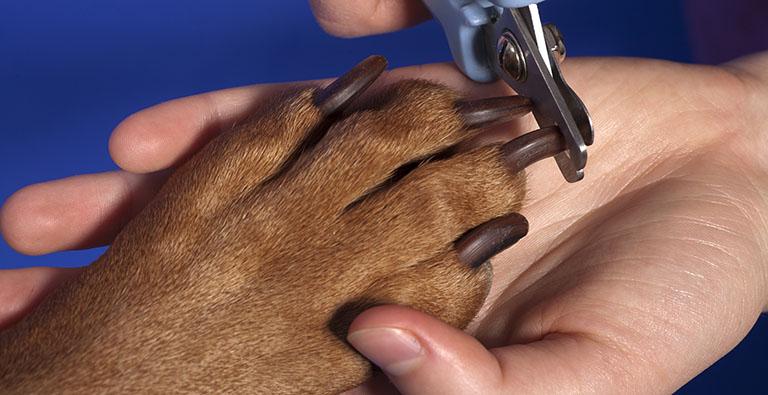
Dogs who enjoy having their nails clipped are rare. However, your dog can be progressively trained to accept having his nails clipped:
If you would like more information about our Posh Dog Knee Brace contact us via our contact form or visit our Facebook page.
Dogs undergoing physical therapy sessions can heal from wounds or surgeries more swiftly and with wider range of motion. Additionally, visiting a canine rehabilitation therapist doesn’t cost much.
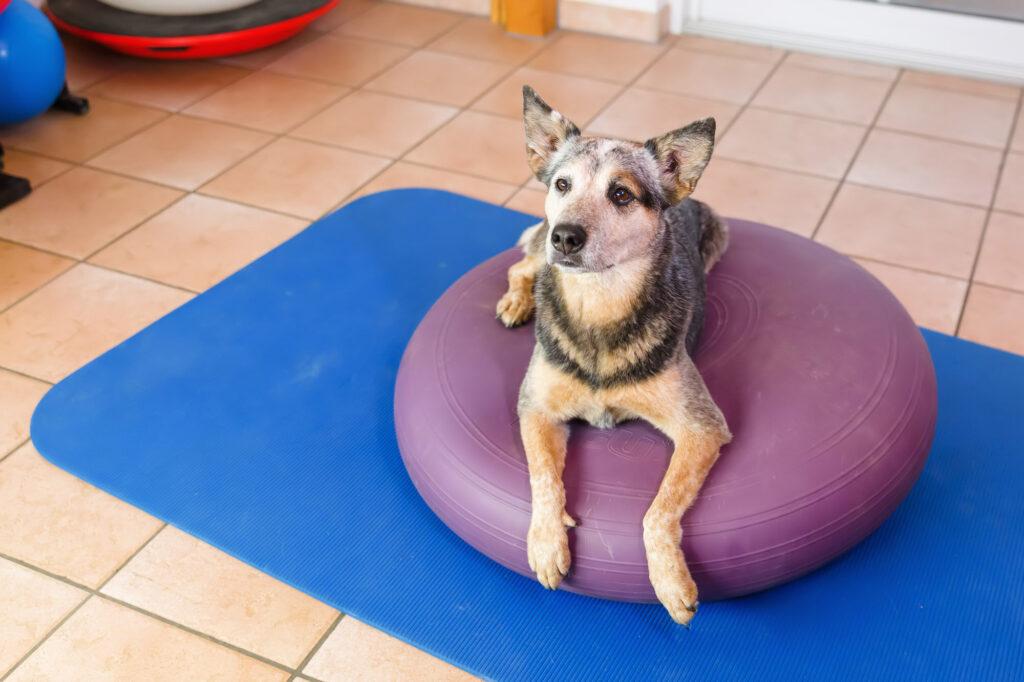
Although it’s incorrect to refer to professionals who help humans as “physical therapists,” canine rehabilitation therapists offer the same services to dogs. With the increasing availability of dog physical therapy, some veterinarians have pursued post-doctoral studies in acupuncture, chiropractic, pain management, and other rehabilitation modalities.
For instance, the American Association of Rehabilitation Veterinarians (AARV) provides information on the efficacy of this method for managing pain and function loss resulting from disease or injury to veterinarians, veterinary surgeons, and pet owners. In an effort to better serve the special needs of working and athletic animals, including those with chronic conditions like arthritis and neurologic impairments, the American College of Veterinary Sports Medicine and Rehabilitation was established more recently.
Dog physical treatment typically starts with a referral to a canine rehabilitation therapist if your veterinarians do not specialize in rehabilitation themselves. These experts complete credentialing programs that concentrate on canine anatomy and physiology, common medical conditions and injuries, assessment methods, pain recognition, and rehabilitation programs to obtain credentials like CCRP (Certified Canine Rehabilitation Practitioner) and CCAT (Certified Companion Animal Rehabilitation Therapist). Among the therapies they provide are:
It’s crucial to remember that the field of canine rehabilitation treatment is evolving quickly due to the availability of new technologies and methods as well as ongoing research, which makes continuing education and staying up to date for rehabilitation therapists essential.
Dog physical therapy can be used to treat both acute and chronic diseases, much like comparable human treatments. A canine rehabilitation therapist may be able to assist with techniques, specialized equipment, and at-home exercise routines if your dog is in pain, has lost strength or flexibility, has an uneven gait or loss of balance, is recuperating from an accident, injury, surgery, or illness, or has chronic symptoms that interfere with favorite activities.
Certain therapies call for tools that you may use at home, like ramps, platforms, balance pads, cushions, and discs. Clinic consultations are necessary for other equipment, like swimming pools, treadmills for dogs, and electronic/magnetic gadgets.
In order to ensure that their dogs have comprehensive physical assessments and that the therapist can contact the veterinarian with any necessary medical treatments or diagnoses, the majority of canine rehabilitation therapists choose to collaborate with veterinarians. Meanwhile, other dog owners have put together their own teams for physical therapy, working directly with holistic practitioners such as massage therapists, chiropractors, and canine acupuncturists. Go to AHVMA.org, the website of the American Holistic Veterinary Medical Association, and select “Find a Member” to locate veterinarians who specialize in nutrition and complementary therapies that improve healing and rehabilitation.
A physical examination, which includes noting the dog’s stride, movement, structure, flexibility, strength, muscle tension, sore spots, and mobility, is the first step in seeing a canine rehabilitation therapist. The therapist will have time to get to know the dog and owner, go over the owner’s improvement and treatment objectives, and talk about the dog’s medical history and behaviors during what may be an hour-long session.
It could be beneficial to record your dog walking or moving in various directions both inside and outside as canine rehabilitation specialists concentrate on mobility and movement. Include the dates, diagnoses, and treatments of any specific illnesses, injuries, or incidents that have impacted mobility in your documentation.
The primary objective of the first visit is to create a strategy using the technology, tools, and therapies that are suitable. This frequently includes the suggestion of certain workouts to improve the muscles weakened by disease or trauma. Usually, these are made specifically for the patient to incorporate into an at-home workout regimen. Dogs that are healing from surgeries or accidents, or whose hind legs are weakening, may find that at-home exercise is very beneficial.
A follow-up plan can contain notes to distribute around family members to ensure that everyone can take part in the rehabilitation process and encourage the dog’s progress. This way, everyone in the family can help your dog heal.
Your dog’s progress will be meticulously documented by your canine rehabilitation therapist, who will also keep track of the specific therapies your dog has received, evaluate the effectiveness of rehabilitation plans, create exercise schedules that you and your dog can follow at home, schedule check-ups to record the healing process, and assess your home for any potential effects on the dog’s functional status.
Costs for veterinarian visits vary based on the type of treatment required, the therapist’s training and experience, and the location. Individual treatment sessions can cost anywhere from $50 to $100 or more, and initial consultations usually run between $100 and $200. The number of sessions needed for treatment determines the overall cost. Costs can be cut by using do-it-yourself therapies and home fitness regimens.
As long as the dog is insured prior to being sick or wounded, several pet insurance companies will pay for holistic and alternative therapies, including canine rehabilitation. For this reason, insurance specialists advise getting coverage for young, healthy dogs well in advance of the onset of any pre-existing conditions that might prevent coverage.
You understand the value of rehabilitation therapy if you have ever worked with a physical therapist following a disabling injury or illness, a broken bone, or a torn ligament. When the time comes, as an informed pet owner, you can be prepared to provide the same hands-on care for your dog by locating a canine rehabilitation therapist.
For more information on your dog physical therapy and how our Posh Dog Knee Brace helps in your dogs recovery contact us via our contact form or visit our Facebook page.
A glucosamine-chondroitin combination is the most commonly suggested joint supplement for dogs with osteoarthritis, but fish oil is not far behind.
For dogs suffering from arthritis, the majority of veterinarians advise using a supplement that blends glucosamine and chondroitin sulfate. Even as late as a study published in 2023, anecdotal evidence from veterinarians who advocate this combination is substantial, despite the fact that research is still somewhat equivocal. Natural cartilage contains chondroitin and glucosamine. Their anti-inflammatory qualities aid in pain relief, and their ability to cushion the joint relieves arthritic joints.
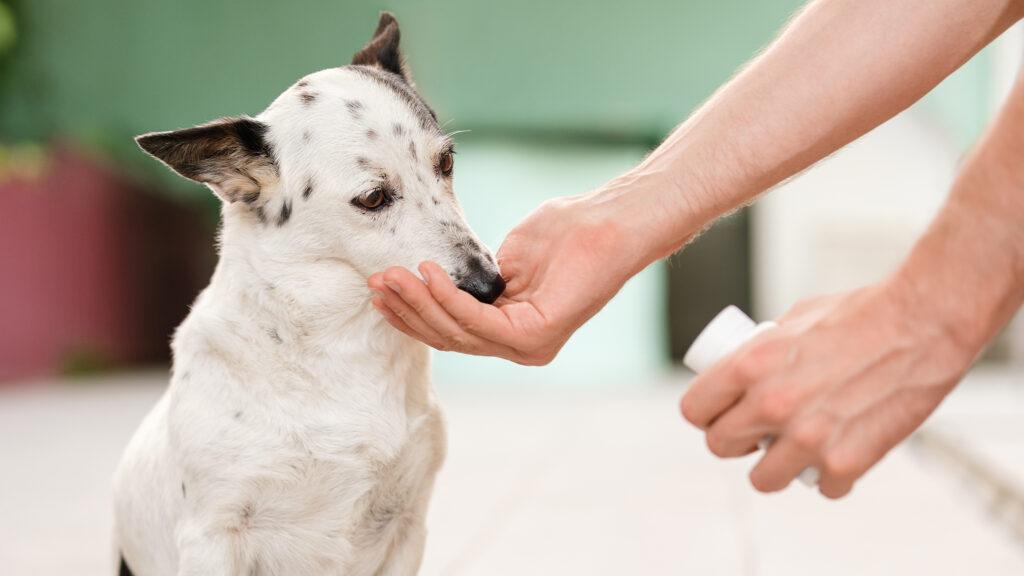
Refer to the manufacturer’s label for information on glucosamine doses. Although they are uncommon, glucosamine overdoses usually start off as vomiting or diarrhoea. Take note that the majority of products demand for a brief window of “double dosing,” often known as the “loading dose.” In a sense, it expedites the advantages. It is possible to use ordinary dosage, but the duration of the desired effects will be much greater. Observation of any change may take a month or two, even with appropriate dosage. Avoid quitting too soon.
Note: Don’t share your human vitamins with your dog; they might include dangerous substances like xylitol. Instead, choose supplements designed specifically for dogs.
Hyaluronic acid (HA) and fish oil are two other active components included in many dog glucosamine-chondroitin formulations. The most compelling evidence for fish oil’s effectiveness as a component of an arthritis therapy regimen for dogs is found in studies on the topic. Furthermore, HA has been shown in a study to have the capacity to raise synovial fluid in a joint. The oral version of HA has been demonstrated to raise synovial fluid in the joints, and it has long been used as an injectable to support joint health and relieve arthritis.
Look for the National Association of Supplement Companies (NASC) seal when selecting a glucosamine brand for your dog. This stamp attests to the product’s inclusion of the ingredients and dosages specified on the label. We would stay away from businesses without the seal.
Because arthritis develops gradually, it is not a good idea to assume that your dog has arthritis if they appear limp or sore when they move or get up. Your dog’s discomfort could be caused by a variety of issues in addition to arthritis. Never assume that a dog’s issue is arthritis, especially if the dog is elderly, or that glucosamine for dogs is a panacea. It’s not. It won’t help with conditions other than arthritis, but it will support joints that are arthritic.
Furthermore, if your dog’s discomfort is too severe for a joint supplement, he might require painkillers which are used a lot for dogs with severe arthritis.
Lastly, confirm that your dog weighs a healthy amount. Continue doing frequent, safe exercise, such as taking long walks and playing gentle games. Continue seeing your veterinarian, and let them know if you see any signs of early arthritis. The better the outcome, the earlier oral supplements like glucosamine are started for dogs. Starting joint-supporting supplements, like as glucosamine, early on, before arthritis develops, seems to offer some preventive benefits for active athletic dogs.
If you are interested in more information about supplements or one of our Posh Braces contact us via our contact form or visit our Facebook Page.
To reduce discomfort and increase range of motion, a dog chiropractor can adjust your dog’s joints.
A dog chiropractor would palpate the dog’s spine, limbs, and even the skull to look for anomalies in the way the bones join together, much like they would during a human chiropractic session. Your dog’s comfort level, nerve function, and the way that joint works can all be affected by even minor misalignments, or “subluxations.”
The subluxated joint is then adjusted and the bones are moved back into position by the dog chiropractor using precise manipulations. One common focus is the spine.
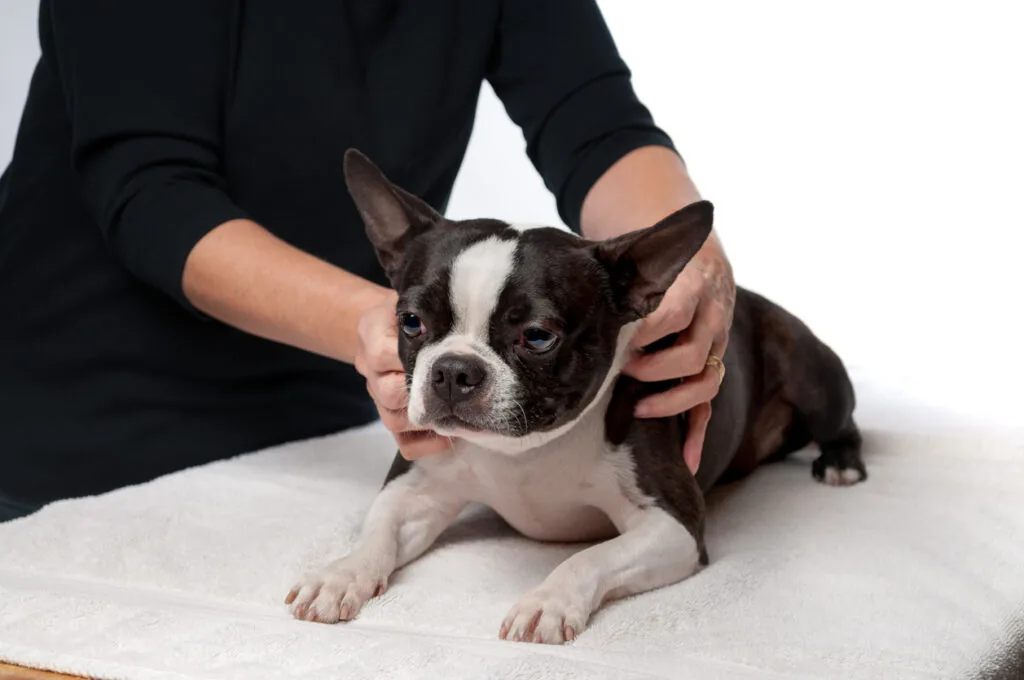
When they observe their dog limping or feeling sore all the time, most dog owners take their pets to see animal chiropractors. If your dog participates in high-impact activities like flyball or agility, you could choose to schedule a preventive dog chiropractic appointment to make sure their body is operating at peak efficiency.
Getting a veterinary diagnosis is crucial if your dog is experiencing discomfort, lameness, or lethargy. Make an appointment with your veterinarian so they can assess the cause of your dog’s discomfort or lack of self-awareness. Why does this matter? Because a variety of health issues can appear to be similar at first glance but may require quite diverse approaches to treatment. Dog chiropractic care, for instance, will help a limping dog with a sore back, but an antibiotic is necessary if the dog has Lyme disease.
If your veterinarian certifies that dog chiropractic is appropriate for your dog’s condition after you’ve determined what’s wrong, you can pursue this course of action.
Like any medical service, the price of a visit to the dog chiropractor can vary significantly based on a number of factors, including your location, the practitioner’s credentials, and your dog’s size and personality. Typically, the first appointment is between $100 and $200, and follow-up consultations are between $50 and $80.
Seek out a chiropractor with certification from the International Veterinary Chiropractic Association (IVCA) or the American Veterinary Chiropractic Association (AVCA). This guarantees that the chiropractor for dogs has received specialized training in the anatomy, joint, and spinal manipulation of dogs.
Animal chiropractic certification can be obtained by veterinarians and qualified human chiropractors holding a doctor of chiropractic (DC) degree. A human chiropractor needs specialized training to work with animals since human and canine joints and bones fit differently. It could be painful and even irreversible to try to adjust a dog in the same way that a human is adjusted.
If you are interested in a Posh Dog Knee Brace contact us via our contact form or visit us on Facebook.
Living with dogs, particularly a new puppy, teaches you rapidly how quickly your house becomes one giant chew toy and how much, uh, mess (don’t judge) is left in every room. A inquisitive dog won’t take long to find socks and rubbish beneath the couch—oh, and look at all those interesting cords plugged in all over the place! A veritable gold mine for our dogs, who also happen to be highly dangerous.
Your house has additional opportunities to dog-proof each room. There are some unexpected dangers everywhere, from the living room and bedroom to the kitchen and laundry area. However, be at ease! Making small changes to your furnishings and décor can provide your dog plenty of comfortable space to unwind in.
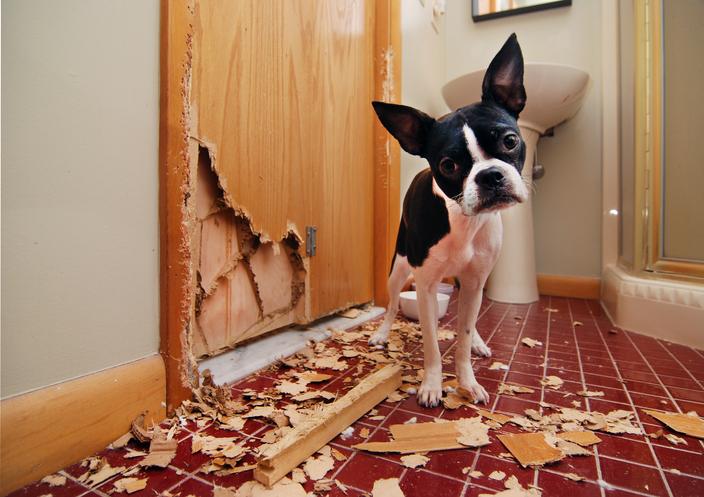
Dogs are fluffy danger vacuums on four legs because they use their noses and mouths to explore their surroundings. You are more likely to see things that could unintentionally endanger your best buddy, a dog, if you literally consider things from their perspective.
I always advise considering your dog’s perspective when assessing a room in your house for safety; what is their height and where is their line of sight? You can find dangerous items that might catch your dog’s attention by evaluating your house from their height. You may be shocked to learn that your golden retriever can easily take your brand-new watch since it is perched just right on your bedside table. Little things that are easily accessible should be taken out and stored in secure places where your dog cannot get to them, like closets or drawers.
Your end table, your bed, and your rocking rocker. If your dog is a good climber and can jump up on things quickly, you might want to remove any potentially dangerous furnishings. Jump-activated chairs have the potential to hurt your dog as well as injury other objects in your house when they swing back. Dogs who follow their noses and will put their paws up on furniture might quickly become distracted by end tables with glass picture frames or breakable family treasures.
Does your dog enjoy a nice, cozy couch spot? Is he more comfortable curled up on a blanket? Dog proofing your house requires careful consideration of where those things should be placed. Never put blankets, dog beds, or rugs next to heaters, fireplaces, fans, or electrical cords or outlets since they can easily become harmful.
The kitchen, bathroom, and laundry rooms are typically the riskiest rooms in your house, but you should spend time in every room since they can all be dangerous. To help divide up spaces or keep your dog out of areas you don’t want them to enter, get some strong baby gates. Your dog will have lots of wonderful spots to rest and unwind once you’ve made these sections of your house safe.
There are a lot of things in kitchens that aren’t dog friendly, like food, medicine, and cleaning materials. Your dog has the greatest opportunity to discover and eat objects that are not appropriate for them. However, kitchens may make excellent doggie hangouts once they are dog-proofed.
Electrical cords, fireplaces, open windows, and recliner chairs are the most frequent issues in living rooms. Since your dog will probably spend the most time in this room with you, it is crucial to make sure it is secure for them.
A dog’s favorite spot to search for intriguing treats to sample and entertaining “toys” to try is usually the bathroom. The greatest method to exercise effective management is to keep cabinets closed, and even better, to keep the bathroom door closed.
Dogs are frequently kept in protected places like bedrooms. Make sure to take out anything that could choke your dog and don’t leave anything out that you’d prefer not to become a chew toy before using your bedroom as a place for them to unwind.
Curious dogs might encounter numerous hazards in laundry facilities. While some risks are more overt, others are more covert. When in doubt, keep the washing room off-limits.
Dogs should never be left unattended outside, but if you do allow your dog to go outside for bathroom breaks through a doggie door in the backyard, make sure the area is secure and safe. Dogs that are bored can easily escape through holes, loose posts, and unlatched gates; therefore, it is important to supervise them whenever they are near pools or play equipment.
Our dogs quickly locate comfortable places in any home and are excellent adapters when we assist them in doing so in a secure manner. For the sake of your dog and to make sure they are comfortable and safe when you are not there, make sure your home is dog-safe.
If you are interested in a Posh Dog Knee Brace contact us via our contact form or visit our Facebook Page.
A smart environment can help you keep your dog safe and happy. Beyond simply caring for their animals, pet owners have numerous other duties. As a result, they might not spend as much time as they would like with their fur babies.
However, you want to be able to check on your pets even when they’re not with you because you’re a conscientious pet owner. You want to guarantee that their requirements are satisfied and that they are safe and comfortable.
Thankfully, technology provides you an opportunity to accomplish these things.
You may make sure that your pet gets the care they need even when you are not at home by using certain gadgets, such as climate-controlled cars, cloud-managed webcams, and automatic feeding.
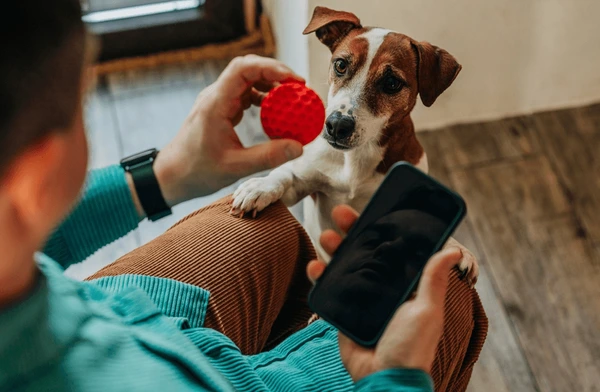
A smart environment is one in which electronic equipment such as computers collaborate to improve human comfort.
Technically speaking, these devices need to complete certain activities on their own and function well even with little assistance from humans.
A smart environment for pet owners also includes utilizing technology to simplify the task of providing for their animals.
Technologies That Are Pet-Friendly
More often than not, fascinating new technologies are introduced in the market. These days, several of these technologies are being utilized to develop pet-focused solutions that enhance the lives of both pets and pet owners.
It is easy to forget when it is time for your pet to eat when you are overworked and occupied. Pet feeders with intelligence offer a solution to this issue.
You may program smart feeders to automatically administer pet food according to a schedule. Even when you are not there, you can still feed your pet on schedule, every day. Just remember to restock it as soon as the feeder runs empty.
Security isn’t the only use for home cameras. They can also be used to observe or check on activities within your house.
Having security cameras in your home gives you the ability to visually check on your pet’s whereabouts and activities.
For instance, you might think your pet has a flea problem when you are gone from home. You can use your home cameras to watch your pet from a distance in this scenario.
Consider purchasing natural flea repellents for your pet, such as essential oils, from a pharmacy before you leave for your house if your pet is always scratching and itching.
There are numerous choices for installing cameras. However, having as little physical equipment at home as feasible (apart from the cameras themselves) may be desirable if we are talking about a smart environment.
With cloud-managed cameras, you can monitor your pets more intently and spend less time on deployment and maintenance because you won’t need cumbersome infrastructure like servers and video storage.
It should be simple to set up these cameras with little equipment. When combined with fast internet, you can see your pets from a distance even when you’re away on business.
Using wearable technology, you can keep an eye on your pet as well.
With GPS trackers, you can monitor your pet’s location. Because these gadgets are small and light, you can discreetly fasten them to your pet’s collar.
There are GPS trackers that let you set up “safe zones” for your pet. Let’s say your pet goes beyond the bounds of the zone. The gadget can then warn you of your pet’s whereabouts by sending you an alert.
A fitness tracker is an additional wearable gadget. These gadgets can measure your pet’s heart rate, distance covered, and caloric expenditure.
While your pet is receiving therapy or medicine, fitness trackers can be a useful tool. Fitness trackers have alert features just like GPS trackers.
Fitness trackers can also be used to arrange for your pet’s veterinarian visit, medication schedule, or to remind you to give your pet dietary supplements like glucosamine, fish oil, or plant extracts and oral tinctures for dogs.
Pets want playtime and entertainment as well. They could get fidgety if you’re not around to play with them.
You can communicate with your pets even when you’re not there to do so thanks to toys that are remotely connected. Your pets can hear you as they play with these toys since some of them have cameras and others have audio.
Among these toys are remote-controlled ball launchers that toss balls for dogs to recover and interactive cubes, which are compact, cube-shaped cameras that are pet-friendly.
Pet owners frequently bring their animals along in their cars, particularly when making a quick trip to the grocery store or a drive-thru restaurant.
Leaving your pets inside the car, however, could be risky because they could suffocate or suffer from heat stroke if left alone for an extended amount of time.
These days, some cars come equipped with a climate control system. Pets may remain cool and have adequate ventilation thanks to this feature, which maintains the interior temperature even when the owner is outside the vehicle.
These days, technology plays a big role in daily life. A smart environment not only benefits humans, but it also keeps dogs safe and comfortable.
However, you shouldn’t rely solely on technology to take care of your pets. Device malfunctions and lost internet connections are also possible.
Interaction between humans and animals cannot be replaced by technology. It is still preferable than having no way to check on your pet while you are gone from home.
As technology advances, gadgets will get even more dependable and contribute to the development of a closer relationship between you and your pet.
If you are interested in a Posh Dog Knee Brace contact us via our contact page or visit our Facebook page.
Hey guys, this is Nikki Lead Veterinary Technician with Posh Dog knee Braces, and today I would like to talk about the prevalence of dog obesity, and the affects it has on your dog’s health. It seems that people were not the only ones who were affected by Covid, as the amount of obese pets has also really come up since the pandemic. Maybe it is because more people are working from home, and thus giving more food or treats to our pets. Either way, we are definitely seeing a very bad trend.
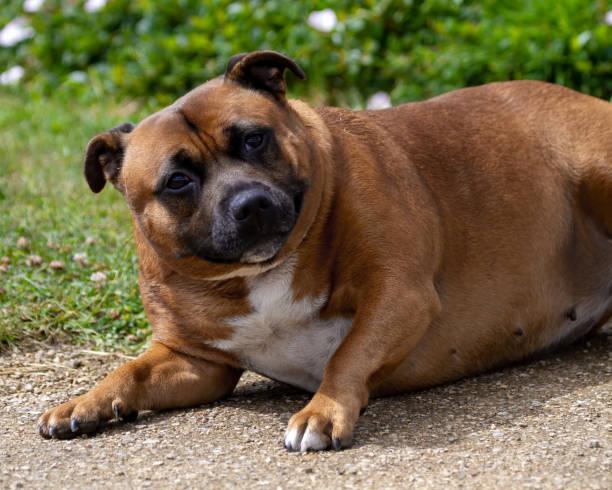
Just like in people, this causes a huge strain on our heart, organs, and yep you guessed it, the joints. Overweight people are so much more likely to have knee and hip replacements, as well as many health issues. The same thing goes for our dogs. Just last week I have had to decline 5 beautiful dogs from getting knee braces, because we just physically can’t brace their dog due to the enlarged belly protruding past the knee. It breaks my heart, because most of these patients also can’t have surgery, due to the increased anesthesia and surgery risks involved.
Once a patient get’s into the obese category, it is very very hard to loose the weight. They are now used to eating more food, treats, and not exercising, and bad habits have now formed from both the owners and the dog. Now, I am not saying you can never give Fluffy a treat, just please be aware of the caloric intake vs. the amount of exercise you are giving to your sweet dog. Dog’s love attention, they do not need a cookie or treat every single time they beg.
There are many successful weight loss programs for dogs, and it is important to start implementing these at the first sign of being overweight. Now I am not talking about a tiny bit of chub or fluff, we are talking about an 8+ out of 10 on the healthy weight scale. To check this, simply look down at your dog’s back. You should be able to see the curve of the ribs and a nice trim tummy.
Now, if you can see each rib, that is too thin. Next, you should be able to palpate or feel the ribs easily when you pet your dog’s side. I can feel every single rib on my healthy dog if I press gently, but they are not visible. If you must push to feel for the ribs, then your dog is obese. This is an easy trick.
I challenge people to put everything your dog consumes in a day, including any treats or people food, into a container. At the end of the day you will be surprised how much your dog is actually eating. A lot of clients would come in with an obese patient and say that they are “picky” eaters.
Your dog is not a picky eater. He is holding out for the goodies he knows you will make and feed him when he doesn’t eat his kibble. He has now trained you, not the other way around. A normal healthy dog will not starve. They may get stubborn, and go off food for a day to see if you will give in and feed them some treats or people food, but they will not starve.
As for supplementing their food to help them feel more full, I recommend feeding veggies. Peas, green beans, a small amount of sweet potato or carrots (remember these also have sugar, so not too much). As a treat I really love freeze dried liver. It can come in large cubes, in which I cut it down into tiny pieces, and my girl loves them. They are naturally fat free, sugar free, and a great snack for your dog.
Diets such as the Farmers dog have become more and more popular, as they mix fresh healthy ingredients specific to your dog’s dietary needs. You will notice your dog having a healthier coat, weight, and more energy. Diet plays a big role in how our dog’s feel and look.
There are some healthy kibbles out there, but if you see a carbohydrate as a first or second ingredient, I would keep looking. Dog’s do not need a lot of carbs, they need healthy proteins. Now I’m not saying go grain free, butfind a healthy mix. Ask your veterinarian for suggestions. Maybe start cooking for your dog, you will be amazed how much your dog’s health will improve.
If you have any questions, about dog obesity don’t hesitate to contact poshdogkneebrace.com via our contact form or visit our Facebook page.
A dog meal with a larger calorie level is the best for dogs to gain weight.
Adding more meals to your dog’s daily diet is the quickest strategy to aid in weight gain. If he typically consumes two meals per day, increase that to three or four while gradually increasing the amount of food consumed and maintaining a consistent mealtime schedule. You might also try:
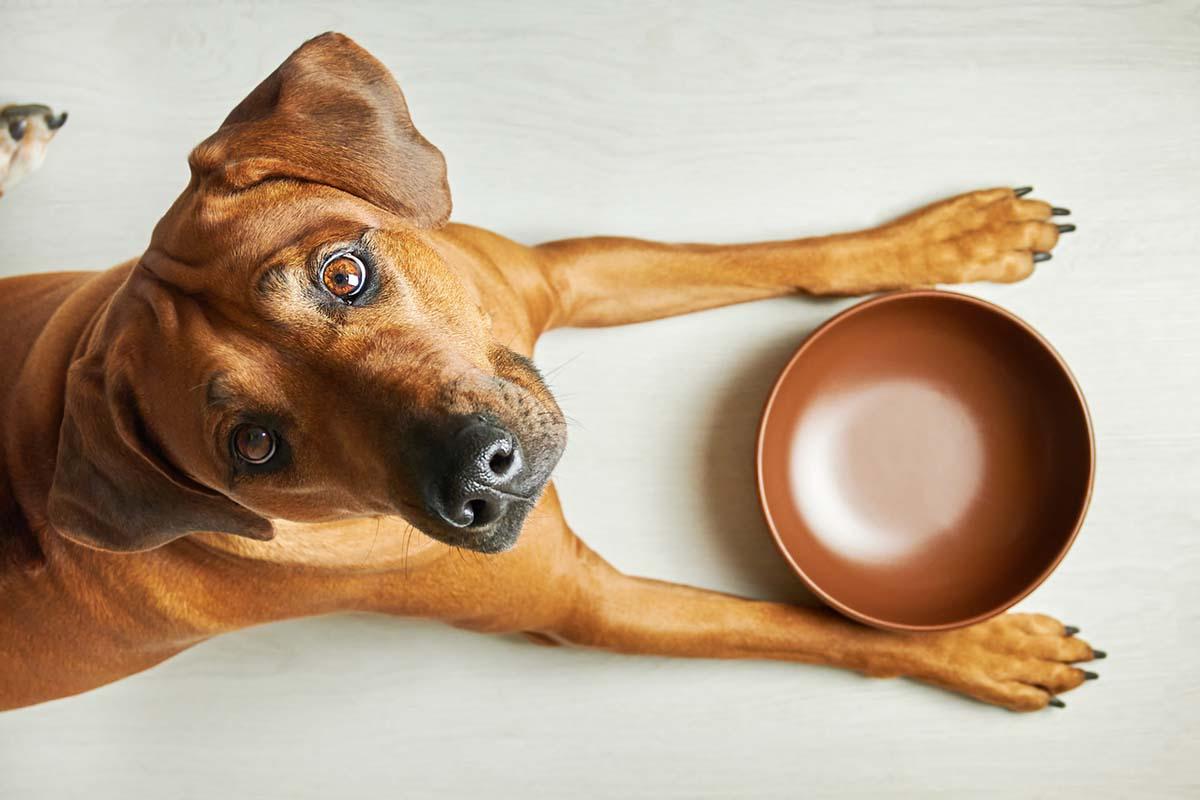
If feeding your dog an extra meal is difficult due to your work schedule, check for the best dog food designed for weight increase. These meals may be labeled as weight-gain dog food, but they definitely aren’t since they have more calories, which are frequently mentioned in tiny print beneath the ingredients list. It’s more likely that you’ll see them marked for active, sport, or performance dogs, which are dogs that require more calories since they expend more energy. These foods typically cost more money. Over the course of roughly a week, gradually transition to the new diet.
But be cautious. Make sure your dog is indeed lean because, like humans, most dogs have a tendency to weigh too much, and we might grow acclimated to that look. Your dog will have a waist that is directly in front of his hips, can be felt through a thin layer of fat, and will be at an appropriate weight. He appears to be snuggled up. He is too thin if the tops of his ribs or the hip/pelvic bones are visible.
Monthly dog weight checks are an excellent guide. Just pick up the dog and step on the scale in the restroom. The weight of the dog is then determined by weighing you alone and deducting that amount. Dogs that maintain a healthy weight live longer.
Some dogs actually need to put on weight, even if the majority of dog owners are waging the war of the bulge and trying to keep their canine companions trim. Boys in their teen years, some senior dogs, and dogs with cancer or other chronic illnesses are among the typical populations who need to gain weight.
So make sure your dog is healthy before starting a weight-gain program by taking him to the vet. Along with performing a physical examination, your veterinarian will likely screen your pet for intestinal parasites and heartworms. In most cases, a complete blood panel is not prohibitively expensive and can be beneficial to rule out a variety of illness issues.
If your dog is a finicky eater, you might want to supplement some of his meals with home-cooked food. Although there are ideas online for cooking homemade meals and treats that can make you gain weight, they might not be very nutrient-dense. To assist you in creating a balanced diet depending on what you wish to feed, look for businesses that employ veterinary nutritionists. Although there is a fee, it is well worth doing this properly.
Other strategies for getting your slim dog to gain weight and eat here are as follows:
Undoubtedly, a dog that is too underweight should be avoided, but take extra care if he also appears lethargic or “not himself.” The ideal place to begin your weight-gain attempts is at your veterinarian.
If you are interested in purchasing a Posh Dog Knee Brace contact us via our contact page or visit our Facebook for more information. We’ve Helped Dogs All Around The World, Now We Want To Help Yours…
Hey guys! This is Nikki, Lead Veterinary Technician with Posh Dog Knee Braces. Today let’s talk about harnesses, and when they can be useful. First off, let’s go over the different types of harnesses, so that you are familiar with the options out there.
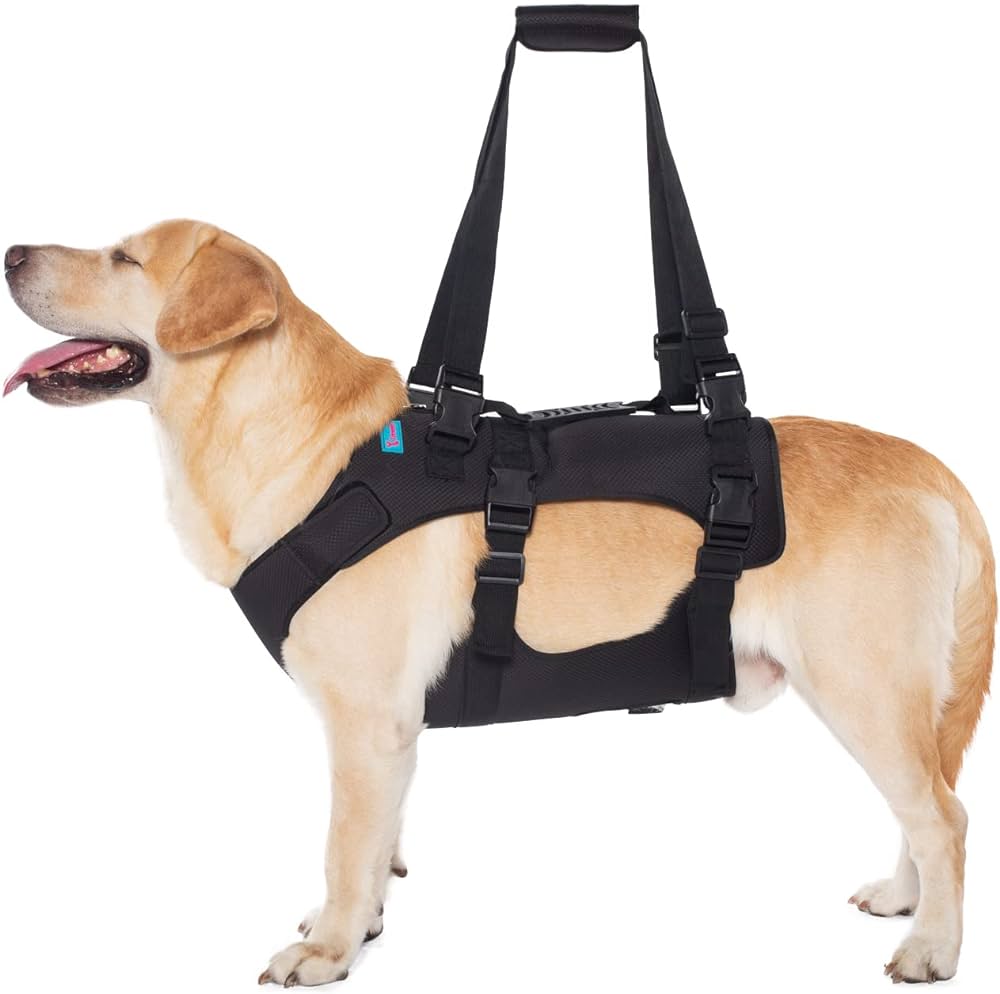
There is a sling harness, which is simply something that goes underneath the entire body and has handles that you can hold on to. This can be anything, from a towel, shopping bag that has been cut down, or something youbough on chewy. A sling is helpful if there is any spinal issues or hip discomfort, in giving full lower back and hip support. The downside to this sling is if you have a male dog, it will make it difficult to urinate outside. There is also more pressure on the bladder, so try to be aware of giving your pup more bathroom breaks.
The next type is a loop type harness, that goes around the back legs, not underneath them, and connects to a harness by the back shoulders. I prefer the help em up harness in this style, as there is a handle between the front shoulder blades, and the back hips. You can also use this style with leg braces, and keep it on for easy use. You simply lift the handle to help you dog stand up vs the sling harness you will need to lift your dog up and slide it underneath the belly.
Each harness has its own benefits. If you have a dog that has a newly injured CCL or ACL, then initially it may be easier to use a sling to help them up and down until you can get a help em up type harness. I would suggest an actual harness with handles for a CCL tear. If your dog, however, has both back legs affected, and potentially the spine, I would suggest a sling type harness, to give them better pelvis support.
Let us know if you have any questions about different types of harnesses! You can contact us via our contact page or our Facebook Page.
Healing injured dogs involves a combination of veterinary care and supportive measures at home. Always consult with a veterinarian for proper diagnosis and treatment. Here are some commonly used canine healing methods for injured dogs:

Remember, individual cases may vary, and it’s crucial to follow your veterinarian’s advice closely for the best outcome in your dog’s recovery using any canine healing methods . If you have any questions on how to help your injuried dog you can contact via our contact page or visit our Facebook page.
While home treatments can be helpful for minor injuries or as supportive measures alongside veterinary care, it’s crucial to consult with a veterinarian before attempting any treatment. Serious injuries or conditions require professional medical attention. Here are some general home treatments for injured dogs:

It’s crucial to note that while these home treatments can be beneficial for minor injuries or as supportive measures, they are not substitutes for professional veterinary care. If your dog experiences a significant injury or shows signs of distress, consult with a veterinarian immediately. Professional guidance ensures that the right diagnosis is made, and appropriate treatment is administered for a safe and speedy recovery. If you have any more questions about home treatments you can contact us via our contact page or visit our Facebook page.
Hi guys, this is Nikki Lead Veterinary Technician with Posh Dog Knee Braces, and today let’s discuss how many hours a day your dog should wear a knee brace. Now this also really depends on what we are treating. If we have a full CCL tear with meniscus involvement, I may suggest you use the brace more often than a patient with a partial tear.
Also, how much energy your dog has is a big factor on how many hours you really need to be using the brace. Some brace companies say wear the brace all day long, with no breaks. This can lead to a lot of problems initially, if you have not properly broken in the wearing time of your brace.

If you have a high energy dog, one that dives off of stairs and furniture, and is harder to control, you may be advised to use the brace a bit more. Now, we only suggest using braces during times that your dog is supervised. This is a medical device, and should not be worn without direct supervision. I would suggest starting out slow, just using the brace during walks and activities hours your veterinary technician will go over with you. Once your dog has been using the brace well, and you feel more confident, you can begin to increase the amount of time (hours) your dog uses the brace.
I still like to give breaks during the day, especially if there is a time they like to lay down and nap. For instance, using the brace for 2 to 3 hours in the morning, while they get the wiggles out, go potty, walk, and breakfast is perfectly fine. You may then opt to remove the brace during lunchtime, as most dogs calm down around this time. Then, you can place the brace back on in the afternoon, and remove prior to going to bed. This is just a suggested scenario, but again you do need to continue monitoring them with the brace.
We do not suggest any patient to wear the brace 8-12 hours a day, as anything that is worn that long on human or dog can cause skin irritation.
If your dog is pretty chill, relaxed, and only really active outside (such as giant breeds), then I would suggest using the brace just for activities. These can include walks, car rides, when someone comes to visit, playing with another dog, stairs, ect. If they spend most of their time laying down, it would not be comfortable to leave a brace on all day long. Let them get cozy, but we will be suggesting some Physical therapy activities to help prevent atrophy.
Put a sign outside your door, this will help discourage people from ringing the doorbell or knocking. Most dogs react to hearing a knock and doorbell, so if we can cut back on those times that will really help with preventing re-injury. Instead, put your phone number on the sign, so they can text you if someone arrives to visit.
Always feel free to speak to your service veterinary technician with any questions, that is what we are here for! Thank you, and give your dog a big hug for us!
You can contact us via our contact page or visit our Facebook page for more information.
Let Your Dog Recover With Our Custom Dog Knee Brace!
We’ve Helped Dogs All Around The World, Now We Want To Help Yours…
The Posh Dog Knee Brace is a 100% custom Dog knee brace, hand made only for your Dog. We make our custom brace with no casting. Our state-of-the-art brace for Dogs is very durable, waterproof, sand proof, and easily adjustable by customers. Our Veterinary Technicians provide personal live video supervision of measuring, and fitting of your Dog ACL brace in the comfort of your own home.
Dogs can be prone to injuries related to various physical activities. Understanding the types of injuries associated with specific activities can help dog owners take preventive measures and seek appropriate veterinary care when needed. Here are common activity-related dog injuries:

Preventing activity-related injuries involves being mindful of your dog’s limitations, ensuring they are adequately conditioned for the activity, and providing proper warm-up and cool-down periods. Regular veterinary check-ups can help detect and address any underlying health issues that might predispose a dog to injuries during physical activities. If an injury occurs, prompt veterinary attention is essential to ensure proper diagnosis and treatment.
For more information about related injuries or if you would like information about our brace contact us via our contact form or visit our Facebook page.